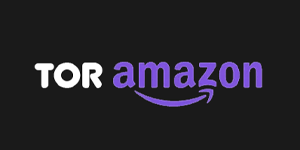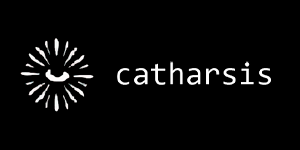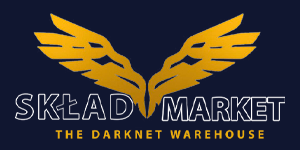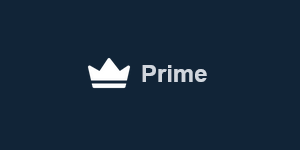Last Updated on May 14, 2025 by DarkNet
Introduction
In February 2024, an international task force of 10 law‑enforcement agencies knocked the LockBit ransomware gang offline, seizing more than 11,000 dark‑web servers and domains after the group extorted at least $120 million from victims worldwide. The dramatic takedown underscored a simple truth: the dark web is no longer a fringe curiosity—it is a high‑stakes battleground for privacy, security and, increasingly, law‑enforcement crackdowns.
Understanding how this hidden corner of the Internet works matters more than ever. Journalists, security professionals and everyday users alike rely on its anonymity tools to safeguard whistleblowers, protect sensitive research and evade censorship. At the same time, criminals exploit the same architecture to traffic stolen data, malware and illicit goods. Navigating that tension requires a clear grasp of the technology, the risks and the safeguards.
This beginner’s guide demystifies the dark web. You’ll learn how it differs from the surface and deep webs, how Tor and similar networks maintain anonymity, and why some activities cross legal lines. We’ll also walk through essential security practices, compare popular privacy tools, highlight common scams and outline practical steps to minimize risk—so you can decide whether, when and how to explore the hidden Internet responsibly.
Structure of the Internet: Surface Web, Deep Web, Dark Web
Surface Web
The surface web is the portion of the Internet that traditional search engines such as Google, Bing and DuckDuckGo can crawl and index. Pages here follow standard Web protocols, allow automated “spiders” to read their content and are designed for public consumption. When you type a query into a search bar and click a result—say, reading this very article or checking today’s weather forecast—you are on the surface web. Because its sites are openly linked, the surface web represents only a small fraction of total online content, but it feels vast because it is the most visible.
Deep Web
The deep web includes any online content that lives behind a login screen, paywall or other access restriction and therefore remains invisible to search‑engine crawlers. Corporate intranets, subscription databases, academic journals and your personal cloud storage all reside here. Although the term may sound ominous, most deep‑web activity is mundane and perfectly legal. For instance, when you sign in to your bank’s website to review recent transactions, you are operating within the deep web. The pages exist on standard servers, but their privacy controls prevent public indexing, keeping sensitive data out of search results.
Dark Web
The dark web is a deliberately hidden subset of the deep web that requires special software—most commonly the Tor Browser—to access. Sites use nonstandard domain suffixes such as “.onion” and route traffic through multiple encrypted relays, obscuring both the server’s location and the visitor’s IP address. Search engines cannot reach these pages, and directories inside the network list them only sporadically, reinforcing a culture of anonymity. That privacy attracts whistleblowers, journalists and citizens in repressive regimes, but it also shelters criminal marketplaces and forums. A relatable example: an investigative reporter may share leaked documents with colleagues via a Tor‑protected drop site, while a cybercriminal on the same network might advertise stolen credit‑card data. The dark web’s dual nature—shielding the vulnerable while empowering bad actors—makes understanding its structure essential for anyone concerned about digital privacy and security.
A Brief History of the Dark Web
Nearly every discussion of hidden online networks begins with ARPANET, the Cold War project that carried the first electronic message on Oct. 29, 1969, proving that a decentralized, packet‑switched network could survive attack and still route traffic. Three decades later, U.S. Naval Research Laboratory scientists expanded that resiliency into “onion routing,” layering encryption so no single relay knows both sender and destination—a foundational idea for anonymous communication.
On Sept. 20, 2002, the alpha version of The Onion Routing (Tor) project went live, soon released as open‑source software and backed by the Electronic Frontier Foundation. Tor’s volunteer‑run relay network democratized strong anonymity: activists in repressive regimes, investigative journalists and, inevitably, cybercriminals all began masking their locations with a click. By the mid‑2000s, Tor had become the de facto gateway to what would later be branded the “dark web.”
In February 2011, Ross Ulbricht—using the alias “Dread Pirate Roberts”—opened Silk Road, the first modern darknet marketplace. Built on Tor and fueled by Bitcoin, the site let buyers and sellers trade drugs and contraband with unprecedented impunity until the FBI shuttered it in October 2013. Silk Road’s rise and fall showed both the commercial potential of hidden services and their vulnerability to determined investigators.
Governments soon launched coordinated offensives. Operation Onymous in November 2014 seized roughly 400 Tor sites and arrested 17 suspects, including operators of Silk Road 2.0. Six years later, Operation DisrupTor targeted opioid traffickers, netting 179 arrests and $6.5 million in cash and crypto, while removing hundreds of kilos of narcotics from circulation. Each wave of takedowns disrupted marketplaces but also pushed criminals toward more resilient, decentralized models.
As of 2025 the struggle remains fluid. Operation Cronos in February 2024 dismantled LockBit, seizing 11,000 dark‑web domains after the ransomware gang extorted more than $120 million. Yet threat actors regroup quickly, leveraging generative AI, ransomware‑as‑a‑service and cryptocurrency mixers. Analysts now project global cybercrime damages will hit $10.5 trillion annually by year‑end 2025, underscoring the dark web’s outsized impact on the broader Internet economy.
How the Dark Web Works
A Three‑Stop Postal Route for Data
Imagine mailing a sensitive letter. You drop it at your local post office, which forwards it to a regional sorting center, which passes it to a courier who delivers it to the addressee. None of the three handlers sees the full journey. Tor (The Onion Router) replicates that model in software: your traffic hops through a guard, middle, and exit relay, each knowing only its immediate neighbors. Roughly 12,600 volunteer relays power the network as of April 2025, keeping any single observer from tracing both sender and recipient.
Tor and .onion Addresses
When you open the free Tor Browser, it builds a 3‑relay “circuit” and wraps your data in multiple layers of encryption—hence “onion” routing. Hidden services use 56‑character .onion URLs that exist only inside Tor. Visiting one is like sending your letter to a P.O. box reachable solely through the postal system’s internal trucks: outsiders can’t even see the address, let alone the contents.
Relay Roles and End‑to‑End Encryption
-
Guard relay (first hop) – Receives your traffic and peels the outer layer, learning your IP address but not your destination.
-
Middle relay (second hop) – Forwards encrypted data; it sees neither origin nor endpoint.
-
Exit relay (third hop) – Strips the final layer and contacts the public Internet or the .onion site.
Inside Tor, every hop is encrypted, but if you visit a non‑HTTPS surface‑web page, the segment from the exit relay to that site travels in clear text. Think of it as the courier handing your unsealed letter to the recipient’s mailbox. Using HTTPS (the lock icon) or a VPN‑over‑Tor adds another envelope.
Alternative Privacy Networks
Other dark‑net architectures aim for similar anonymity with different trade‑offs:
-
I2P (Invisible Internet Project) – Employs garlic routing, bundling multiple messages into one encrypted “clove” for extra traffic analysis resistance. All traffic stays inside I2P’s private layer, which in February 2025 released version 2.8.2 and continues to expand encrypted, unidirectional tunnels.
-
Freenet – A friend‑to‑friend mesh where each node contributes disk space to a distributed datastore. Once content is uploaded, it persists as long as peers request it, making censorship difficult and eliminating the need for a constantly online server.
Why the Architecture Matters
Understanding these moving parts clarifies both the promise and peril of the dark web. The same relay system that shields whistleblowers also frustrates investigators; the same hidden addresses that protect dissidents can hide criminal storefronts. Mastering the postal‑route mechanics—and their limits—lets you weigh privacy gains against security risks before venturing into the hidden Internet.
Deep Web vs. Dark Web: Key Differences
The terms “deep web” and “dark web” often appear interchangeably in headlines, but they describe very different slices of online reality. The deep web simply encompasses everything that sits behind a login, paywall or other access control—corporate intranets, streaming queues, medical records, even your private Google Docs. These pages rely on the same protocols and domain names as the public Internet, yet search‑engine crawlers cannot reach them because authentication gates keep casual visitors out. In most cases, the deep web exists to protect privacy, enforce intellectual‑property rights or comply with regulations.
The dark web, by contrast, is a deliberately hidden subset that requires specialized software such as the Tor Browser or I2P to reach. Instead of standard URLs, it uses non‑indexed domains like “.onion” and routes every connection through multiple encrypted relays to mask both server and user identities. That anonymity empowers political dissidents, whistleblowers and investigative journalists, but it also shelters ransomware gangs, contraband markets and extremist forums. While accessing the dark web is not inherently illegal in the United States, many activities that thrive there—drug sales, child‑exploitation content, weapons trafficking—are unequivocally criminal.
In short, the deep web is about restricted access, whereas the dark web is about engineered anonymity. Understanding the distinction helps security professionals set realistic policies and enables everyday users to recognize when they are simply logging in to a private site versus venturing into a hidden network where legal and technical safeguards differ dramatically.
|
Dimension |
Deep Web – Private Internet Content |
Dark Web – Hidden Networks |
|---|---|---|
|
Accessibility |
Requires standard credentials, paywalls or firewalls; viewable in any browser |
Requires Tor, I2P or similar anonymity tools; not reachable via conventional browsers |
|
Legality |
Predominantly legal, routine activities (banking, corporate dashboards, academic journals) |
Access is legal, but many popular services host illicit goods or services |
|
Anonymity |
Normal IP exposure; server and user identities typically known to each other |
Multi‑layer encryption obscures both server and user locations, fostering strong anonymity |
|
Indexing |
Excluded from search engines by design (robots.txt, login barriers) |
Technically unindexable by surface‑web crawlers; directory lists exist only within the network |
Legitimate Uses of the Dark Web
Why It Matters
Internet shutdowns affected 4.78 billion people in 2024 alone, as governments from Iran to Myanmar throttled access during protests and elections. In that climate, the dark web’s anonymity tools serve as a digital lifeline for journalists, whistleblowers and ordinary citizens who need uncensored information.
Journalism: SecureDrop Keeps Evolving
More than 70 news organizations—from The New York Times to ProPublica—run SecureDrop, an open‑source system that lets sources upload documents through a Tor‑protected .onion site without revealing their identity. The project’s March 18, 2025 release (v2.12.0) added Ubuntu 24.04 support and a semiautomated upgrade path, underscoring its active maintenance and newsroom trust.
Whistle‑Blowing Channels
SecureDrop and similar onion services give insiders a safe conduit to expose corruption or safety lapses without risking employer surveillance. Because traffic never leaves the Tor network, neither Internet service providers nor platform operators can easily trace the sender—crucial protection in sectors where retaliation is swift.
Censorship Circumvention
The BBC’s Tor mirror (bbcnewsv2vjtpsuy.onion) delivers global news to audiences in countries that block the broadcaster’s regular site. During the February 2024 Iranian protest blackouts, digital‑rights monitors reported traffic spikes to the mirror as citizens sought unfiltered coverage—proof that onion sites can outmaneuver nationwide filters.
Privacy‑Focused Forums
Not every dark‑web community revolves around crime. Dread, a Reddit‑style forum launched in 2018 and still active in 2025, hosts sub‑communities on operational security, encryption and privacy best practices alongside its more controversial market chatter. Such spaces let researchers and activists trade defensive know‑how without exposing their real‑world identities.
Takeaway: From encrypted tip lines to censorship‑proof news portals and privacy forums, the dark web’s architecture can advance press freedom and individual rights when used responsibly—reminding us that anonymity is a tool, not a verdict.
Illicit Markets on the Dark Web
A Thriving, Shape‑Shifting Underground
Dark‑web commerce mirrors legitimate e‑commerce in speed and specialization—only the wares are illegal. Marketplaces rise, fall and rebrand in months, but four product lines remain constant: narcotics, counterfeit documents, ransomware toolkits and stolen data.
Drugs: The Flagship Category
Drugs still dominate darknet sales, with vendors touting laboratory test results and next‑day shipping. Hydra, shuttered in 2022 after racking up an estimated €1.23 billion in annual turnover, set the playbook: escrowed crypto payments, buyer reviews and discreet courier drops. Newer bazaars copy Hydra’s logistics, while law enforcement counters with periodic dragnets. One 2024 example: the Nemesis market, taken offline and its Iranian administrator sanctioned for fentanyl trafficking.
Counterfeit Documents and Identity Kits
Alongside pills and powders, sellers offer passports, driver’s licenses and Social Security numbers—often bundled with “fullz” (complete identity profiles). These kits enable loan fraud, immigration scams and money laundering. The same forgers advertise printing templates and hologram overlays, turning any high‑resolution printer into a fake‑ID mill.
Ransomware‑as‑a‑Service (RaaS)
Ransomware operators have franchised their playbook, renting out encryption malware and leak‑site hosting for a cut of each payout. LockBit was the most prolific brand until Operation Cronos in February 2024 seized 11,000 associated domains and froze its public leak portal. Within weeks, affiliates pivoted to smaller RaaS kits, underscoring how takedowns disrupt but rarely erase supply.
Stolen Data: Credentials on Demand
Credential markets fuel phishing and account‑takeover crime. Genesis Market, dismantled in April 2023’s Operation Cookie Monster, hawked browser “cookies” and login tokens from 1.5 million infected machines, letting buyers bypass multifactor authentication. Its closure did not end the trade. In May 2024 the FBI again seized BreachForums, a bazaar for databases and hacking tools, only to see it resurrected two weeks later under new management—complete with a 560 million‑record Ticketmaster trove.
Market Economics and Enforcement Cycles
The darknet economy rewards resilience. Sellers migrate to invitation‑only channels or switch to encrypted messaging apps when a site goes dark; buyers follow reputation scores, not domain names. Law enforcement, meanwhile, leverages blockchain tracing, undercover buys and server misconfigurations to stage high‑impact busts that temporarily inflate prices and spur copycat platforms.
Bottom line: Illicit dark‑web markets evolve like startups—iterating on security, customer service and branding. Each takedown dents confidence but also drives innovation, ensuring that drugs, forged documents, ransomware kits and stolen credentials remain only a few clicks away for those willing to risk the trip.
How to Access the Dark Web Safely
A cautious setup minimizes the chances of leaking your identity or infecting your device. Follow these four essential steps before you click a single .onion link.
1. Download Tor Browser
Always obtain Tor Browser from the project’s official download page, not a third‑party mirror. As of April 2025, the current stable release is version 14.0.9, published April 1.
2. Verify the Signature
Each Tor package ships with a PGP signature (.asc file). Use GnuPG (gpg –verify tor-browser-linux64-14.0.9.tar.xz.asc) or the built‑in Windows verifier to confirm the hash matches the developer’s public key. A valid signature proves the download was not tampered with en route.
3. Add a VPN or Tor Bridges
A reputable, no‑logs VPN hides Tor usage from your Internet service provider and prevents correlation attacks on the first hop. If a VPN is not an option—or Tor is blocked in your country—enable bridges or the Connection Assist feature introduced in the 14.5 alpha series to fetch obfuscated entry nodes automatically, sidestepping censorship.
4. Consider Tails OS for Maximum OpSec
Tails (The Amnesic Incognito Live System) is a Linux‑based operating system that boots from a USB stick and routes all traffic through Tor. It leaves no forensic trace on the host computer, resets to a clean state at every reboot, and includes VeraCrypt, KeePassXC and OnionShare for secure file handling. Use Tails when the stakes—journalistic work, whistle‑blowing, sensitive research—justify a fully compartmentalized environment.
One‑sentence caution: Even with Tor, a VPN and Tails, a single slip—logging in with your real email, enabling browser scripts or opening documents outside the sandbox—can deanonymize you, so treat every click on the dark web as a potential exposure.
Risks and Threats on the Dark Web
Anonymity cuts both ways: the same relay network that protects whistleblowers also shields adversaries who prey on newcomers. Before you launch Tor, weigh four recurring hazards that can turn curiosity into crisis.
-
Malware payloads
Many .onion sites embed drive‑by exploits or offer “free” downloads laced with remote‑access Trojans. Because Tor traffic is slower, users are tempted to disable built‑in security features—exactly what attackers anticipate. Always keep the browser updated, disable scripts by default and quarantine any file in a virtual machine before opening it.
-
Phishing and impersonation
Marketplace clones swap a single character in a URL, tricking buyers into sending cryptocurrency to impostor wallets. Bookmark verified links and compare PGP‑signed announcements before every purchase. Treat onion URLs like bank‑account numbers: one typo can cost hundreds of dollars with no charge‑back recourse.
-
Deanonymization attacks
Tor is robust but not infallible. In late 2024 researchers disclosed a timing attack that let law‑enforcement analysts correlate entry and exit traffic from outdated Tor clients, confirming at least one user’s real IP address. The Tor Project patched the flaw and urged users to upgrade immediately, but the episode proved that complacency, not code, is often the weakest link.
-
Law‑enforcement honeypots
Undercover servers masquerade as illicit storefronts or forums, silently logging IPs, transaction hashes and PGP keys. The March 2024 takedown of Nemesis Market—a hub for drugs and stolen data—followed months of covert access by German and U.S. investigators who collected evidence before replacing the home page with a seizure banner.
Real‑world incident: During the Nemesis operation, authorities seized servers in Germany and Lithuania, copied 1.1 terabytes of order history and later used the logs to arrest high‑volume fentanyl vendors in three countries. The bust illustrates how a single misstep—reusing a shipping address, logging in without a VPN—can pierce Tor’s armor and place both buyers and sellers squarely in investigators’ sights.
Bottom line: On the dark web, technical defenses matter, but operational discipline matters more. One unpatched browser, one misplaced click or one chat with a honeypot can unravel the anonymity you counted on to stay safe.
Operational Security: Staying Anonymous
Operational security, or OPSEC, is the discipline that turns technical anonymity into real‑world protection. Tor and VPNs mask your network path, but a single careless click can still expose your identity. Follow these best practices every time you venture onto the dark web.
-
Share zero personal data
Never reuse usernames, email addresses or profile photos that appear elsewhere online. Strip metadata from documents and images before upload, and resist the urge to discuss hometowns, hobbies or shipping details that can be cross‑referenced against public records.
-
Encrypt everything with PGP
Pretty Good Privacy remains the gold standard for end‑to‑end message security. Generate a fresh key pair on an air‑gapped computer, store the private key offline and publish the public key on a reputable keyserver or pastebin. Verify vendors’ or sources’ fingerprints out of band—preferably via a secondary communication channel—before sending sensitive information.
-
Use hardware wallets for cryptocurrency
Keep funds off web‑based wallets and exchanges. Devices such as the Trezor Safe 3 or Ledger Nano X sign transactions in isolated firmware, preventing malware from stealing private keys. Load only the amount you plan to spend, and move any remaining balance to cold storage immediately after the session.
-
Operate from a dedicated device
Segregate dark‑web activity from daily computing. A budget laptop or single‑board computer running Tails or Qubes OS reduces the risk of cross‑contamination. Disable Wi‑Fi and Bluetooth when not in use, and never log in to personal accounts on the same machine—even briefly.
-
Disable scripts and plug‑ins by default
JavaScript, Flash and browser extensions can leak IP addresses, fingerprint your device or trigger drive‑by downloads. Tor Browser ships with the NoScript extension set to “Safest” mode; leave it there unless a trusted site absolutely requires active content, and even then consider using a disposable virtual machine.
Maintaining anonymity is a continuous process, not a one‑time setup. Adopt a skeptic’s mindset—question every download, every prompt and every request for information—and you’ll shrink the attack surface that criminals and investigators alike rely on to unmask careless users.
Legal Considerations
Accessing the dark web with tools such as Tor is lawful in most democracies, but what you do there is governed by criminal, consumer‑protection and anti‑money‑laundering statutes. In every jurisdiction, buying or selling contraband—drugs, malware, counterfeit IDs—remains illegal, and penalties can be severe.
United States. Tor itself is protected by the First Amendment and no federal law bans anonymous browsing. However, transactions involving controlled substances or hacking tools trigger the Controlled Substances Act, the Computer Fraud and Abuse Act and the Money Laundering Control Act. Federal task forces such as JCODE routinely scrape marketplaces, make undercover buys and trace cryptocurrency; convictions for darknet opioid sales have resulted in 20‑year sentences, and life imprisonment is possible for large‑scale trafficking.
European Union. The EU’s Digital Services Act, fully in force since February 17 2024, obliges online platforms—including dark‑web mirrors that reach EU users—to remove illegal goods and cooperate with law enforcement. National laws then impose criminal sanctions: selling counterfeit passports can carry up to 10 years in Germany, while large‑scale drug trafficking can lead to life sentences in France or Spain. GDPR and anti‑money‑laundering directives add civil and financial liabilities for mishandling personal data or moving illicit crypto.
CIS countries (e.g., Russia, Belarus, Kazakhstan). Accessing Tor is not banned, but authorities aggressively prosecute darknet commerce under broad drug and extremism articles. Russia’s Criminal Code Articles 228 (narcotics) and 273 (malicious software) allow 15‑ to life‑sentence ranges; in December 2024 a Moscow court gave the alleged founder of the Hydra market life without parole. Belarus requires VPN providers to register with the government, and unregistered use can trigger administrative fines. Kazakhstan criminalizes “distribution of information facilitating drug trafficking,” which prosecutors have applied to forum posts linking to .onion addresses.
Bottom line: Laws vary, enforcement evolves and ignorance is no defense. Consult a qualified attorney before accessing or conducting any transaction on the dark web, and assume that every jurisdiction you touch online can claim authority over your actions.
Alternatives to the Dark Web
Not every privacy need requires the full anonymity of Tor. Three common options—VPN‑only browsing, I2P and Freenet—offer different trade‑offs. Here’s a concise SWOT snapshot for each.
VPN‑Only Browsing
Strengths
-
One‑click setup with mainstream providers.
-
Masks your IP from websites and local networks.
Weaknesses
-
Centralized trust: the VPN company can log traffic.
-
No built‑in protection against browser fingerprinting or tracking cookies.
Opportunities
-
Ideal for streaming, public‑Wi‑Fi security and location spoofing without Tor’s speed penalty.
Threats
-
Compelled data disclosure in high‑risk jurisdictions.
-
Fake “free” VPNs that monetize user data or inject ads.
I2P (Invisible Internet Project)
Strengths
-
Garlic routing bundles messages, improving resistance to traffic analysis.
-
Supports internal services (“eepsites”) and encrypted peer‑to‑peer file sharing.
Weaknesses
-
Smaller relay network than Tor, limiting exit capacity to the regular Internet.
-
More complex configuration, especially for newcomers.
Opportunities
-
Growing developer focus on mobile clients and performance tweaks could broaden adoption.
Threats
-
Niche user base makes correlation attacks easier if many peers are hostile.
-
Occasional compatibility breaks after major updates.
Freenet
Strengths
-
Fully decentralized datastore; content persists as long as it remains popular.
-
Friend‑to‑friend mode lets users restrict connections to trusted peers.
Weaknesses
-
Slow retrieval times for rarely accessed files.
-
Limited real‑time interaction; better for archival publishing than live chat.
Opportunities
-
Suits whistleblower drop sites or censorship‑resistant document archives where latency is secondary.
Threats
-
Large storage footprint can attract legal scrutiny if illicit material is cached.
-
Development pace lags behind Tor and I2P, raising maintenance concerns.
Takeaway: A VPN is fastest but demands provider trust, I2P balances anonymity and performance for niche communities, and Freenet excels at durable, censorship‑proof publishing. Choose the tool that matches your threat model rather than defaulting to Tor for every privacy task.
Case Studies: Silk Road and AlphaBay
Silk Road
Launched in February 2011, Silk Road became the first mainstream darknet marketplace, pairing Tor’s anonymity with Bitcoin payments. At its peak the site listed more than 13,000 drug ads and processed an estimated $1 billion in sales. Ross Ulbricht, operating as “Dread Pirate Roberts,” ran the platform from his laptop in a San Francisco library until the FBI arrested him on Oct. 2, 2013. A federal jury convicted Ulbricht on seven counts in February 2015, and he received two life sentences plus 40 years.
In a stunning reversal, former President Donald Trump issued a full pardon on Jan. 21, 2025, citing sentencing disparities and broad support from the crypto community. Ulbricht walked free after nearly 12 years and is scheduled to speak at the Bitcoin 2025 conference in Las Vegas.
AlphaBay
AlphaBay debuted in September 2014 and quickly eclipsed Silk Road’s record, amassing more than 200,000 users, 40,000 vendors and 250,000 illicit listings. The FBI, DEA and international partners infiltrated the site during Operation Bayonet. On July 5, 2017, Thai police arrested founder Alexandre Cazes; a week later he was found dead in his Bangkok cell. Authorities seized AlphaBay’s servers and cryptocurrency wallets, replacing the homepage with a seizure banner and simultaneously taking over the rival Hansa Market to harvest user data.
The story didn’t end there. In August 2021, co‑founder “DeSnake” relaunched AlphaBay with a decentralized infrastructure and stricter vendor vetting. As of early 2025 the reboot remains online, though it commands a fraction of its former traffic and faces constant DDoS attacks and phishing clones.
Key Takeaways
-
Anonymity is brittle. Both cases show that operational mistakes—Ulbricht’s real‑name Gmail account, Cazes’ unencrypted laptop—gave investigators the leverage they needed.
-
Global coordination works. Operation Bayonet synchronized arrests, server seizures and undercover stings across three continents, proving that jurisdictional hurdles are surmountable.
-
Takedowns spur evolution. Each high‑profile bust drives marketplaces toward stronger encryption, multi‑sig escrow and decentralized hosting, but it rarely eliminates demand.
-
Legal outcomes can shift. Ulbricht’s 2025 pardon illustrates how political winds and public opinion can upend even the harshest sentences, adding uncertainty to deterrence strategies.
The Future of the Dark Web
As surveillance intensifies and digital borders harden, the dark web is evolving in both capability and complexity. Four emerging trends are shaping what lies ahead.
Privacy Coins and Crypto Innovation
While Bitcoin remains the most accepted currency on darknet markets, its traceable ledger has driven demand for alternatives. Privacy‑focused coins like Monero and Zcash offer stealth addresses and shielded transactions, making forensic blockchain analysis far more difficult. In 2025, darknet vendors increasingly demand Monero for high‑risk transactions, and new wallets now integrate atomic swaps for seamless conversion between currencies.
Quantum‑Resistant Encryption
The looming threat of quantum computing has sparked adoption of post‑quantum cryptography in anonymity networks. The Tor Project began experimenting with hybrid algorithms in 2024, and I2P is exploring lattice‑based schemes for secure routing. These safeguards aim to future‑proof traffic from potential decryption by quantum‑enabled adversaries.
AI for Moderation and Evasion
Artificial intelligence now plays both defense and offense. Market admins use AI to detect scams, fake reviews and phishing links, while law enforcement deploys machine learning to map vendor reputations and analyze seizure data. In parallel, threat actors have begun using LLMs to auto‑generate malware listings and evade keyword filters, accelerating both growth and complexity.
Decentralized DNS and Hosting
To counter takedowns, developers are turning to decentralized DNS systems like Handshake and InterPlanetary File System (IPFS). These tools remove reliance on central registrars and servers, allowing dark web sites to persist across mirror nodes even after a seizure. While adoption is early, the shift signals a long‑term move toward censorship‑resistant infrastructure.
Looking ahead: The dark web will continue to blur the line between resistance and risk, embedding itself deeper into encrypted protocols and decentralized systems. Anonymity will grow stronger—but so will the sophistication of those working to pierce it.
Security and Practical Recommendations
The dark web offers powerful privacy tools, but it also hosts real dangers—from malware and phishing to deanonymization and law-enforcement traps. Staying safe requires more than just downloading Tor. You need a full-spectrum security mindset that combines technical setup, behavioral discipline and financial hygiene.
Step 1: Technical Hardening
-
Use trusted software only. Download the Tor Browser from torproject.org, verify its PGP signature and keep it updated.
-
Route traffic through a VPN. A no-logs VPN masks Tor usage from your ISP and adds another layer of protection.
-
Isolate your activity. Use a dedicated device or a live OS like Tails to prevent cross-contamination with personal files or logins.
-
Disable scripts. Keep Tor Browser in “Safest” mode to block JavaScript and plug-ins that could leak your real IP or fingerprint your system.
-
Avoid downloads. If necessary, open files only in a sandbox or virtual machine to reduce infection risk.
Step 2: Behavioral Discipline
-
Never reveal personal details. Don’t use your real name, email address or any identifier that appears elsewhere online.
-
Encrypt communication. Use PGP for messaging and file transfers. Verify recipient keys before sharing anything sensitive.
-
Beware of phishing. Bookmark trusted onion sites and double-check URLs. Clones are common and often carry malware.
-
Avoid honeypots. Law enforcement sometimes runs fake storefronts or forums to gather evidence. Don’t engage with suspicious or unsolicited offers.
Step 3: Financial Hygiene
-
Use privacy-focused wallets. Avoid browser-based crypto wallets. Opt for hardware wallets like Trezor or Ledger for secure key storage.
-
Limit funds. Load only what you need for each session. Store remaining balances in cold wallets and use mixing services carefully, knowing they may still be traceable.
-
Transact anonymously. Don’t reuse wallet addresses. Consider converting Bitcoin to Monero for enhanced transaction privacy.
Legal disclaimer: Accessing the dark web is not illegal in most jurisdictions, but engaging in or facilitating criminal activity is. Laws vary by country and can change rapidly. This guide is for informational purposes only and does not constitute legal advice. Consult a qualified attorney before using anonymity tools or conducting any activity that may raise regulatory or legal concerns.
Conclusion
The dark web is neither a digital utopia nor a lawless wasteland—it’s a complex, evolving ecosystem where tools for anonymity, free expression and resistance coexist with criminal marketplaces and systemic threats. Understanding how it works, from onion routing to decentralized hosting, is key to navigating it safely and responsibly.
As we’ve seen, technologies like Tor, I2P and privacy coins empower users to bypass censorship, protect sensitive communications and maintain control over personal data. At the same time, the same infrastructure facilitates illicit trade, malware distribution and identity theft. The line between privacy and peril is often one of intent—and operational discipline.
By hardening your setup, practicing smart behavior and maintaining financial discretion, you can reduce your exposure to common risks. But technology alone is not a shield. Staying anonymous requires continuous learning, self-awareness and legal caution.
In an era of rising digital surveillance and increasing cybercrime, the dark web represents both a warning and a tool. Use it to understand the boundaries of online freedom—and if you choose to explore it, do so with care, purpose and respect for the laws that govern your digital footprint.













